Tacos, bolognese, lasagna. What do all these wonderful creations have in common?
Amazing, mouthwatering, rich, ground beef.
But, what’s one thing that can quickly ruin all the hard work that’s been put into making these amazing meals?
Chewy, tough, or rubbery ground beef.
Luckily, today will be the last day you’ll ever have cooked chewy ground beef.
Here’s how ground beef can become rubbery, the leading five reasons ground beef comes out chewy, and what you can do to fix it for next time, and every time after that!
Ground beef is exactly what the name implies, it’s a larger cut of beef (fat, protein, and connective tissue) ground up into smaller chunks.
This phenomenon can turn a normally tough cut of beef, like brisket, chuck, or round, into smaller, more tender, and easier to manage pieces.
However, just like if you were cooking these cuts of beef BEFORE they were ground up, you can end up with tough, chewy, and rubbery beef AFTER it’s been ground.
Effectively, ground beef will become rubbery through the cooking process if the fat and connective tissue haven’t broken down, it has lost too much moisture, had too much or too little fat content, or it was poor quality meat.
Here’s everything you need to know.
Why Is My Ground Beef Chewy?
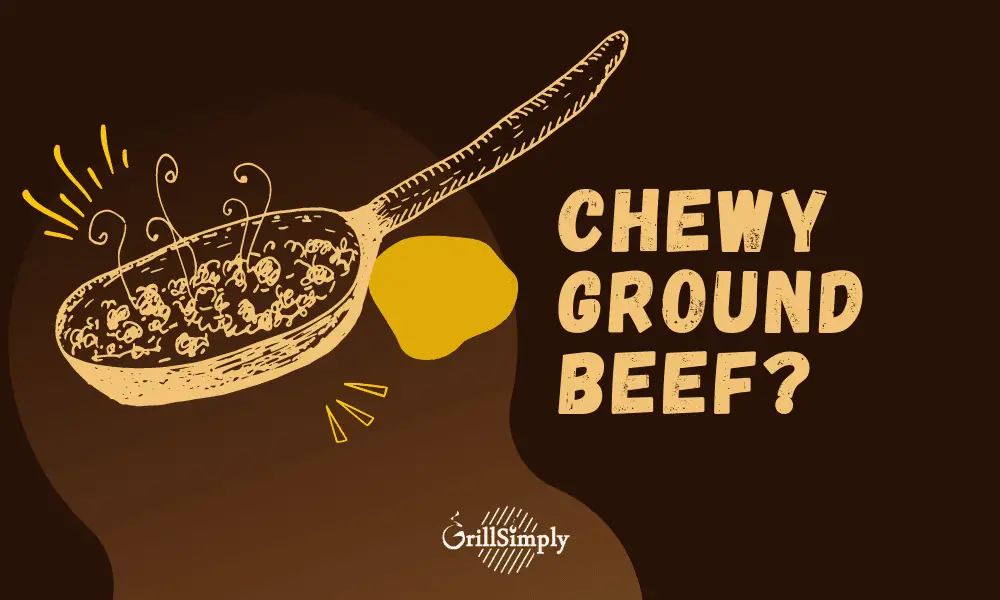
So, since ground beef is essentially just the parent cut of beef, ground into smaller, minced meat, it’s subjected to very similar cooking fundamentals.
This means, the same reasons why a steak can come out chewy, ground beef can come out chewy too. Although it’s not exactly the same, the same principles apply.
These come down to:
- Meat Quality
- Protein-To-Fat Ratio
- Undercooked Ground Beef
- Overcooked Ground Beef
- Inappropriate Cut Of Beef
Let’s take a closer look at how each of these factors can play a critical part in the chewiness, rubberiness, and toughness of your ground beef.
1. Meat Quality
It almost goes without saying, but the quality of cooked ground beef is highly impacted by the freshness, and quality of the raw ground beef.
This doesn’t mean you need to source the finest ground beef from a cow raised on a throne and only fed individual pieces of gold-plated grass. We’re talking about ground beef here, after all.
But, bear in mind that the overall freshness of the meat before it was ground up, as well as how it’s been stored and how long it’s been stored before cooking it does play a big part in how juicy and tender it will be.
Over time, the meat’s proteins oxidize, and the composition of the meat overall degrades.
If you suspect your ground beef is old or off, it’s not worth cooking it. Not only will it be potentially dangerous, but it’s much more likely to come out chewy and rubbery.
2. Protein-To-Fat Ratio
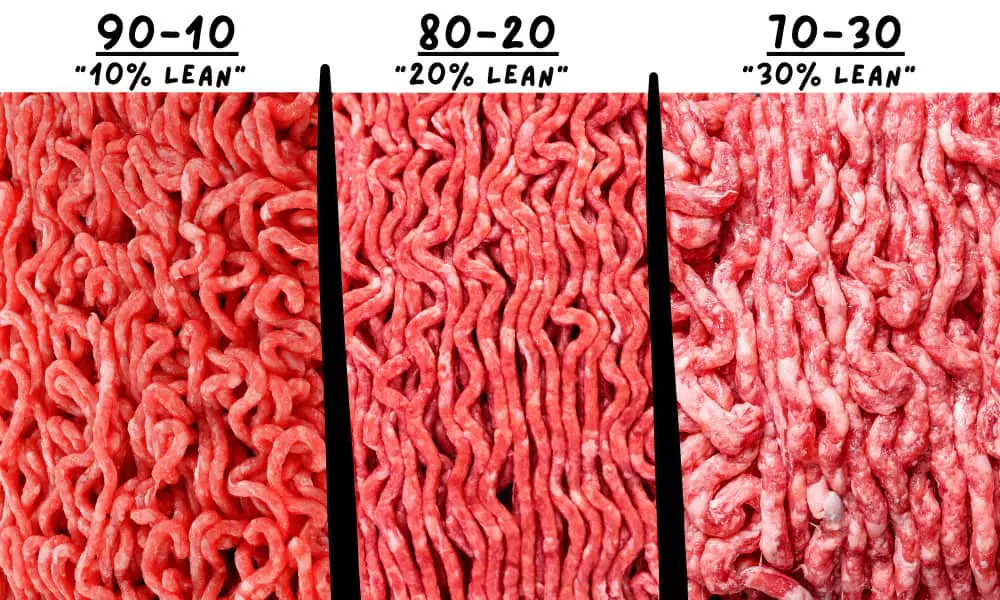
The protein-to-fat ratio is a measure of what percentage of the ground beef is fat, and what percentage is protein or “meat”.
This is often measured and marketed by saying “10% lean, 20% lean, 30% lean etc.”
This “lean” percentage just refers to what percentage of the ground beef is fat. So, 20% lean means 20% fat for example.
The percentage of fat in the ground beef also plays a huge part in how you should cook it.
For example, if you cook lean ground beef too long then it more easily becomes tough and chewy.
On the other hand if you don’t cook fatty ground beef long enough, too much fat will remain and it too will become chewy.
So, be sure to cook your ground beef longer if it’s higher in fat content, and cook it shorter if it’s leaner.
3. Undercooked Ground Beef
No matter how lean or fatty your ground beef is, you can still always undercook it.
If you don’t cook your ground beef long enough some of the fat may still remain intact, particularly if it’s 20% or 30% lean.
What this means is that when you go and bite into it, although the protein part may be soft, the raw fat will certainly be chewy! This is another reason you shouldn’t wash raw ground beef before you cook it, it adds excess moisture which impacts the cook!
According to the USDA, you should always cook ground beef to at least 160°F, just to ensure any bacteria within the meat has been destroyed. This goes for ground pork too, or if you are mixing ground beef and ground pork together.
Although beef tartare can be safe if it’s been handled and prepared correctly, if you want tender ground beef then you’ll have to cook down the fat, but not overcook the protein!
4. Overcooked Ground Beef
So, now you may think you better blast your ground beef to melt and caramelize all the fat. But, just as undercooked ground beef can be chewy, so can overcooked ground beef.
Although this is for a slightly different reason!
Where uncooked ground beef can be chewy due to the presence of raw fat, overcooked ground beef that has no fat content left can also be just as chewy!
When you overcook the protein part of the ground beef, it toughens up, expels all of its moisture, and prevents reabsorption of this moisture. This can be a real issue if you’re cooking ground sirloin or another lean ground beef.
The result? A very dry, tough, and chewy mouthful!
Similar to if you’re trying to eat a well done steak, doneness of ground beef matters too!
5. Inappropriate Cut Of Beef
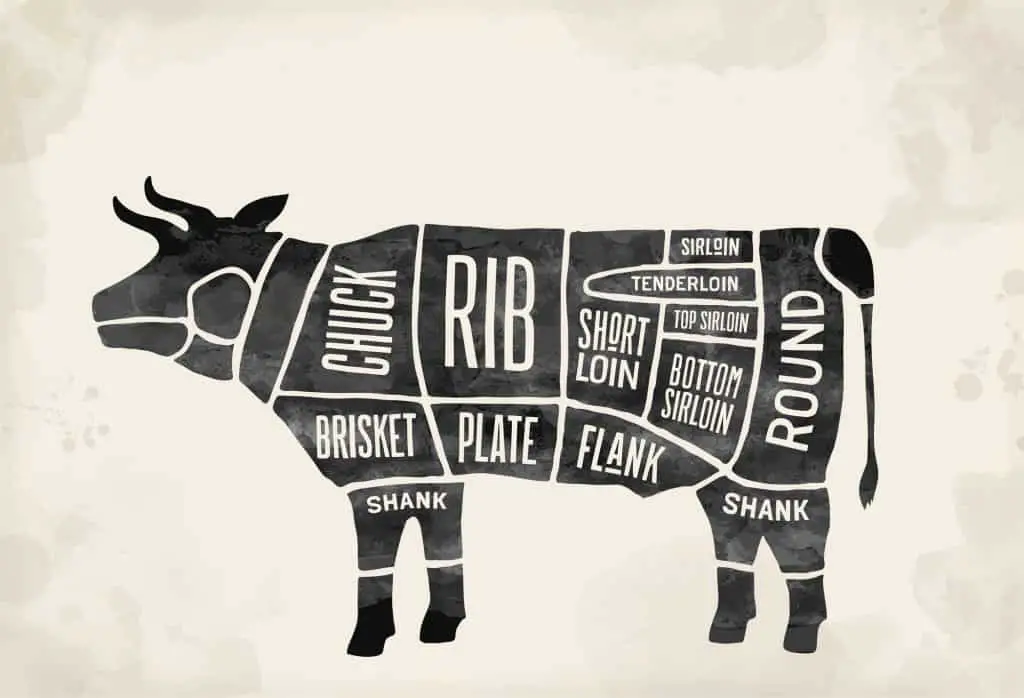
This problem really only ever arises if you decide to make your own ground beef.
Normally, if you go to the butcher, local grocery, or Costco, you’ll find the ground beef is made from chuck, round, sirloin, plate, or flank.
What all these beef cuts have in common is they are relatively inexpensive and have a high-fat content.
The presence of fat is essential for ground beef.
If you were to make ground beef from lean beef cuts such as New York Strip or Filet Mignon they would be as chewy as ever.
If you’re making your own ground beef, don’t get experimental – stick with the nice, fatty cuts of meat.
Using the right cut of meat will help in every case, whether you’re trying to avoid tough and chewy lamb, or even being one of the main culprits in tough pulled pork!
How To Fix Chewy Ground Beef
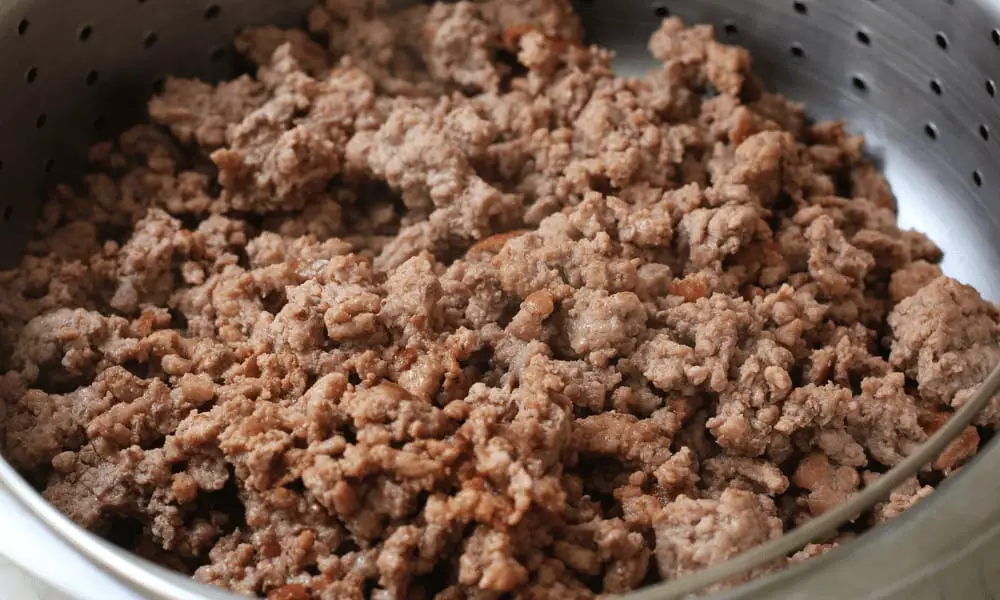
If it’s already too late and you’ve got yourself some chewy ground beef, then there is one method that can help return the chewy ground beef to a palatable state, but it’s not fool-proof:
- Return your ground beef to a skillet at medium heat.
- Add half a cup of your favorite sauce, stock, or broth,
- Bring it to a light simmer and cook out the excess liquid for 3-5 minutes.
- Let cool and serve.
So long as your ground beef wasn’t absolutely overcooked, this method will help the meat reabsorb some moisture and can make all the difference!
How To Prevent Chewy Ground Beef Next Time
To be quite frank with you, the best way to fix chewy ground beef is to simply prevent it from happening next time.
Follow these steps to prevent chewy ground beef next time:
- Ensure the ground beef is at room temperature before you start cooking.
- Heat up a pan or skillet to a medium-high heat with a tablespoon of oil.
- While it’s heating up, lightly season your ground beef. Not too much as the more salt you add the more moisture will be drawn from the meat. Remember, you can always add more seasoning at the end!
- When the pan is hot, add your ground beef and immediately start breaking it up with a wooden spoon or wooden spatula.
- But, once it’s broken up, only mix it every 2-3 minutes. This way you get a bit of color on the bottom before mixing and overall you’ll have much tastier meat!
- You know it’s done when it’s browned all over, there’s no pink in the middle, and is uniform in shape, this usually takes between 6-10 minutes. The leaner your ground beef is, the less time is needed.
- Don’t drain the fat (or if you do don’t drain all of it!). As the ground beef rests this fat is reabsorbed into the meat which can be the difference between chewy and tender ground beef.
Some home cooks and chefs swear by boiling their ground beef instead of frying it. But honestly, I live for the deep brown caramelization of ground beef, not some moist, wet, or soggy excuse of a meat!
Other Tips For Cooking Ground Beef
To further level-up your ground beef game, here are some expert answers to some frequently asked ground beef questions.
Should You Season Ground Beef Before Or After Cooking?
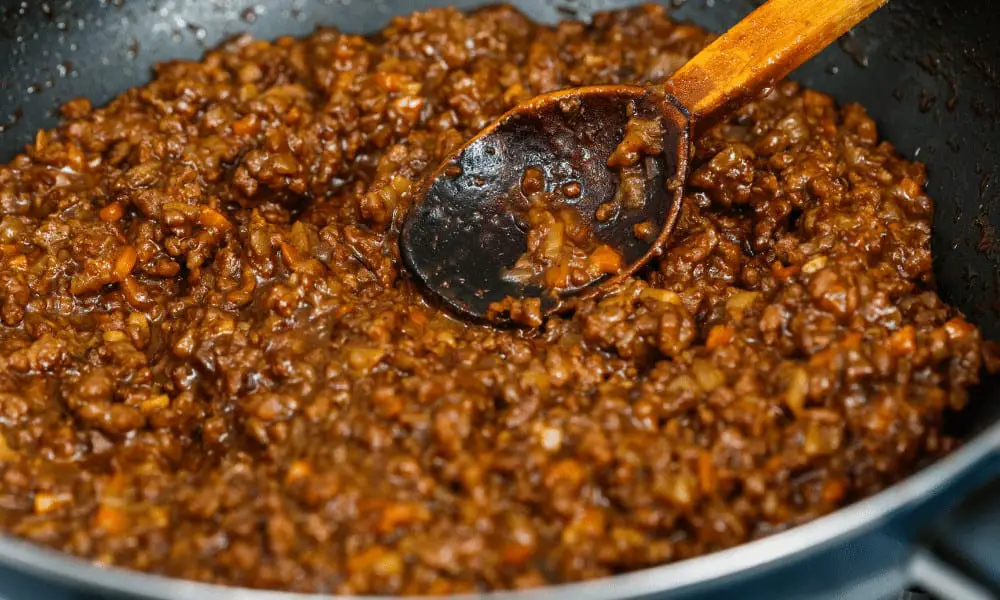
Seasoning will come down to what dish you’re actually making with your ground beef. In general though, if you add salt or salty seasonings to the raw ground beef, it will draw out more of the moisture during the cooking process.
This can be great to get yourself some crispy ground beef, but it can equally dry it out and leave you with some tough and chewy beef.
If you’re making taco meat, or other dry ground beef then I would hold off on the seasoning until at least halfway through the cook!
If you’re making a wet sauce to go with your ground beef, like with lasagna or bolognese, then seasoning early can be a good way to get some flavor into the beef itself.
Do You Drain Ground Beef?
This is probably one of the most controversial topics when it comes to cooking ground beef. Some people even go as far as to wash their ground beef!
Yes, this seems crazy and is totally unnecessary.
The liquid that’s left while you’re cooking ground beef is the tastiest liquid you’ll ever find. Sure, it’s got a lot of fat and oil in it, but fat means flavor.
I’m not going to direct you to do one or the other, but I would certainly recommend leaving at least some of it in there. This is because it actually get reabsorbed, flavoring the meat and preventing it from drying out and getting chewy!
If you decide to drain your ground beef, do it before you add any final seasonings like taco seasoning etc. I would also recommend keeping some of the beef fat, as it’s great for homemade sauces, stocks, and gravy.
How To Cook Ground Beef So It Comes Out Uniform?
If you want yourself some evenly cooked and uniform ground beef, instead of big chunky bits (which can be nice too!), then you really need to start breaking up the ground beef as soon as it hits the pan.
You can optionally break it up raw and place it in the hot pan in smaller pieces to begin with too. However, if you get a good wooden spoon and start to crush and chop it up when it hits the skillet before it starts to brown then you can get some good, evenly sized pieces!
Once it’s at your desired size, be sure to stop mixing it and allow it to brown on the bottom before further stirring!
Juicy Summary
So, the main culprits that cause ground beef to become rubbery and chewy all boil down to the meat quality, the cut of beef used, the protein-to-fat ratio, and the cooking of the ground beef.
If you’ve been left with some pretty tough and chewy ground beef, you can always try return it to the pan to simmer with some delicious stock or sauce for an extra few minutes.
This can return some much needed moisture to the ground beef and make it much more palatable.
If your ground beef was undercooked this may also continue to break down some of the remaining fat too!
Otherwise, the best way to fix chewy ground beef is to simply prevent it happening next time. With the help from above, if you know what’s caused it you can work around it for next time.
After all, practice makes perfect, right?
For more crazy-good meat guides, check out:



1 thought on “5 Reasons Why Your Ground Beef Is Chewy! (+ What To Do)”
I’ve been cooking for 70+ years. I read about the tough ground round issues. Thank you so much, I learned a lot from you.
Robbie